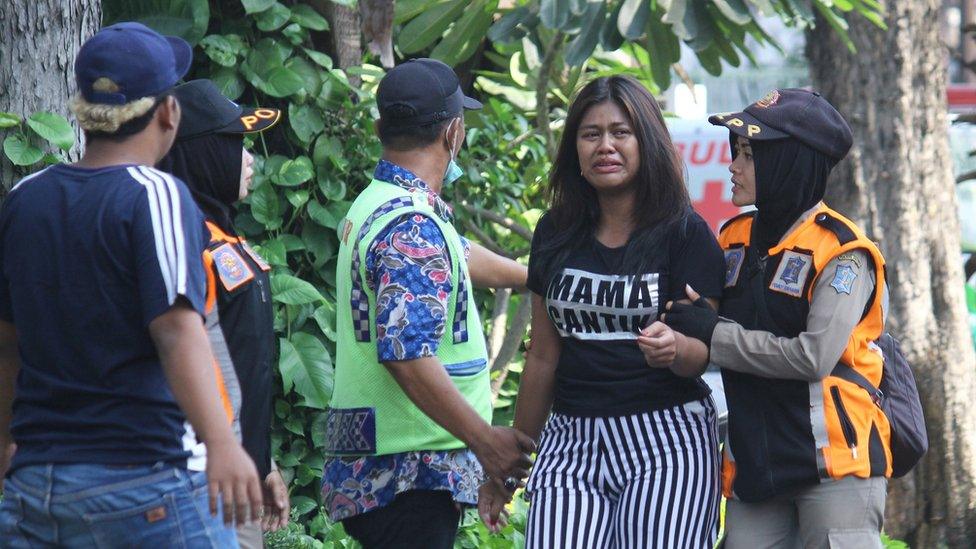Surabaya attacks: Parents who bring their children to die
- Published
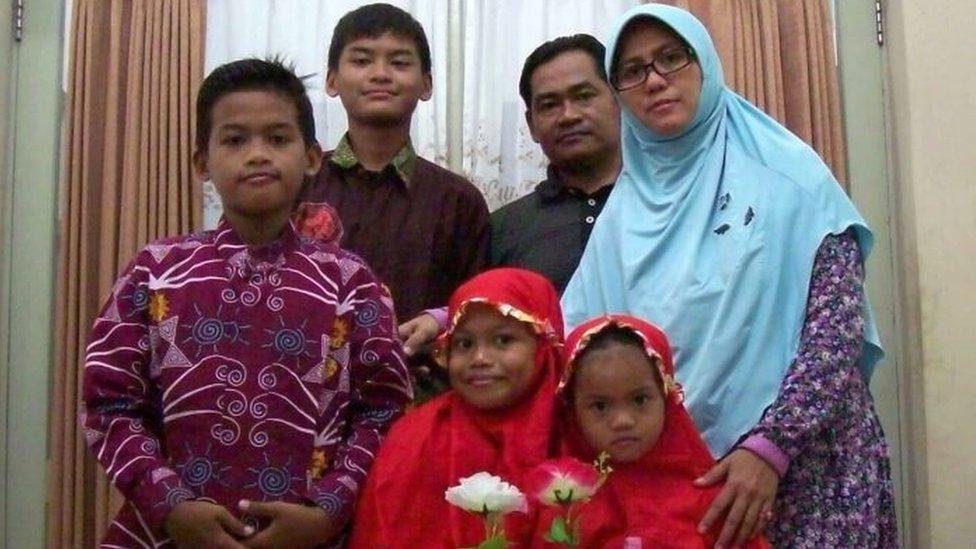
The family that police say was responsible for Sunday's attacks
The past days' deadly Islamist attacks in Indonesia have stood out because two families - parents and their very own children - were the attackers.
While children have been used as suicide bombers before around the world, it is rare that parents take their own children to die along with them.
In previous cases, children have been taken from their families, indoctrinated or drugged, then forced to attack.
The recent suicide blasts have been the deadliest militant attacks in Indonesia in more than a decade.
On Sunday, a mother targeted a church in Surabaya, alongside her two daughters, while the father and the two sons detonated bombs at two others.
The daughters were nine and 12 while the sons were aged 16 and 18.
"This pattern of attack is quite new - it's something we have not seen in Indonesia before," Alexander Raymond Arifianto, Indonesia specialist at Nanyang University, told the BBC.
Sunday's deadly bombings shocked Indonesia
On Monday, two parents attacked a police station in the same city, also taking their three children along, one of whom survived.
The world's most populous Muslim-majority country has seen a resurgence of Islamist militancy in recent months.
Why are parents taking their children along?
"Nobody suspects kids," Yohanes Sulaiman, a security analyst at the School of Government at Jenderal Achmad Yani University in Indonesia, told the BBC.
The advantage for militant groups is that children are harder to detect for security forces. They generally arouse less suspicion than adults.
"The modus operandi of security officers is basically to look for a man carrying something suspicious," agrees Mr Arifianto.
"But in the future, and maybe even the next days, police and security officers will also have to anticipate children being used in such attacks."
While initially Islamist suicide attacks had been carried out by men, groups like the Taliban or Islamic State (IS) then moved on to also use women because they appeared less suspicious.
Once women suicide bombers became more common, the next step was to use children because, again, they were a group less likely to cause suspicion.
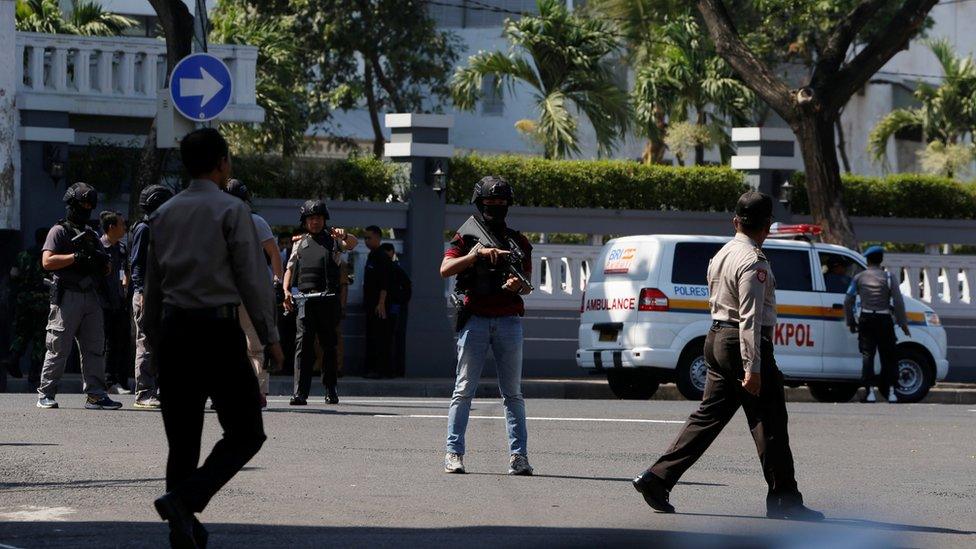
Police outside the station following Monday's attack
In the case of Indonesia, however, neither women nor children had been used in suicide attacks before.
"It's exploiting the weakest point in our security systems," Mr Sulaiman explains.
"People don't expect that from children - and kids on their own or parents with kids are often not even properly checked by security."
Has anything similar happened in other countries?
Suicide attacks carried out by children are not new and the tactic has been prominently employed by Islamist militant groups like IS in Syria and Iraq, the Taliban in Afghanistan and Pakistan, and Boko Haram in Nigeria.
IS, for example, often recruits children from poor families and refugee camps, or they are simply pressed into the ranks of the militants by force.
They are then indoctrinated in special training camps, and often featured in promotional videos.

Militant groups have tried to target and indoctrinate children before
Boko Haram in Nigeria is also known for using children as human bombs.
Last year, the UN said there had been a significant increase in the number of children suicide attackers used by Boko Haram.
The group often gets its attackers by kidnapping and drugging, or forcing the children by threatening harm to their families.
In one case, a bomb was strapped to a baby being carried by a young girl.
Could this happen again?
The reason why parents would have chosen to use their own children in the blasts remains puzzling to analysts.
"There are actually a lot of children that could be recruited as suicide bombers in Indonesia," says Mr Sulaiman.
"There is a pool of children in fundamentalist schools or boarding schools and it is easy for radical preachers to poison such a young mind."
So while the past two days' attacks may be unique, Mr Sulaiman warns they may not be the last: "Using your own children for an attack will probably remain an extremely rare case but I would be lying if I said that I don't expect any more attacks to follow."
Reporting by the BBC's Andreas Illmer.
- Published13 May 2018
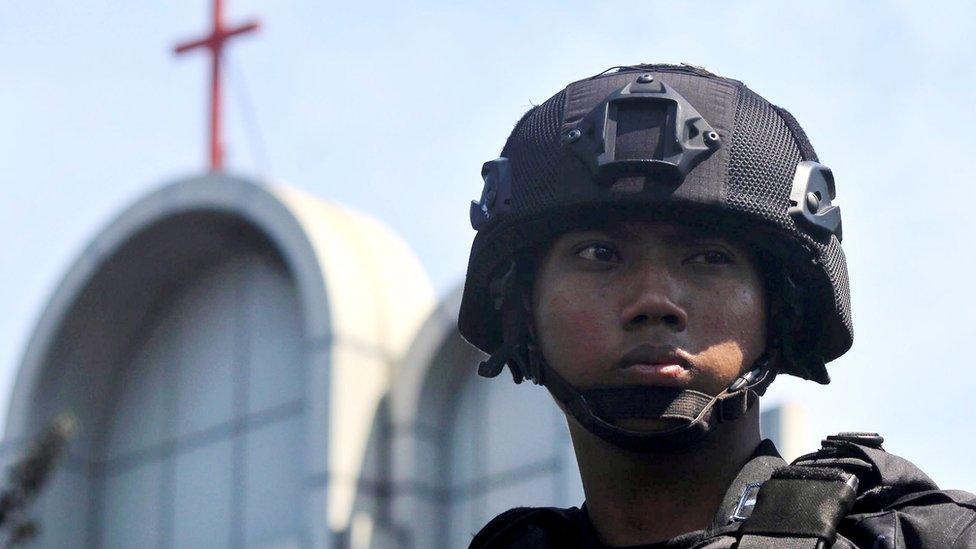
- Published14 May 2018
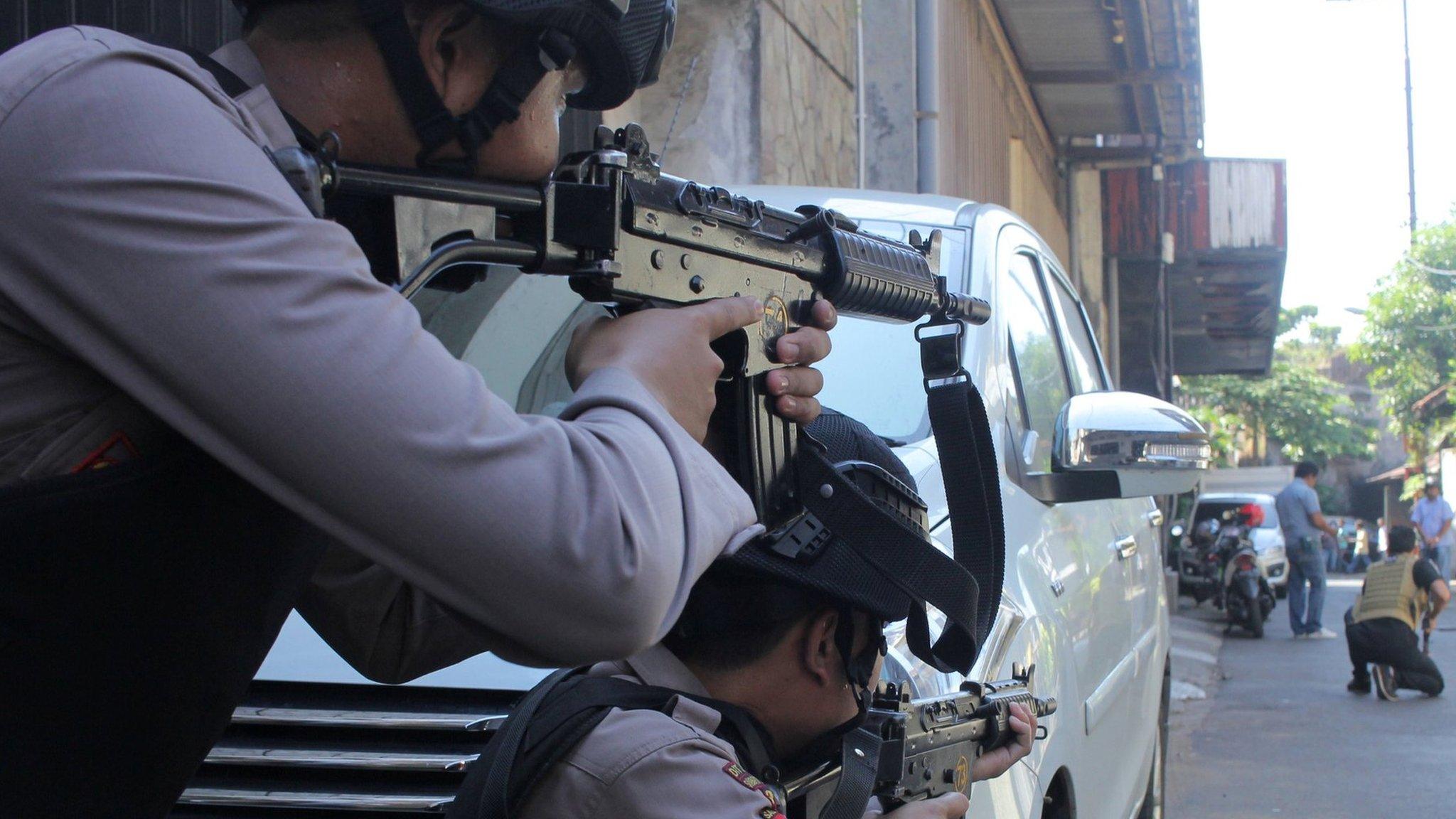
- Published13 May 2018
